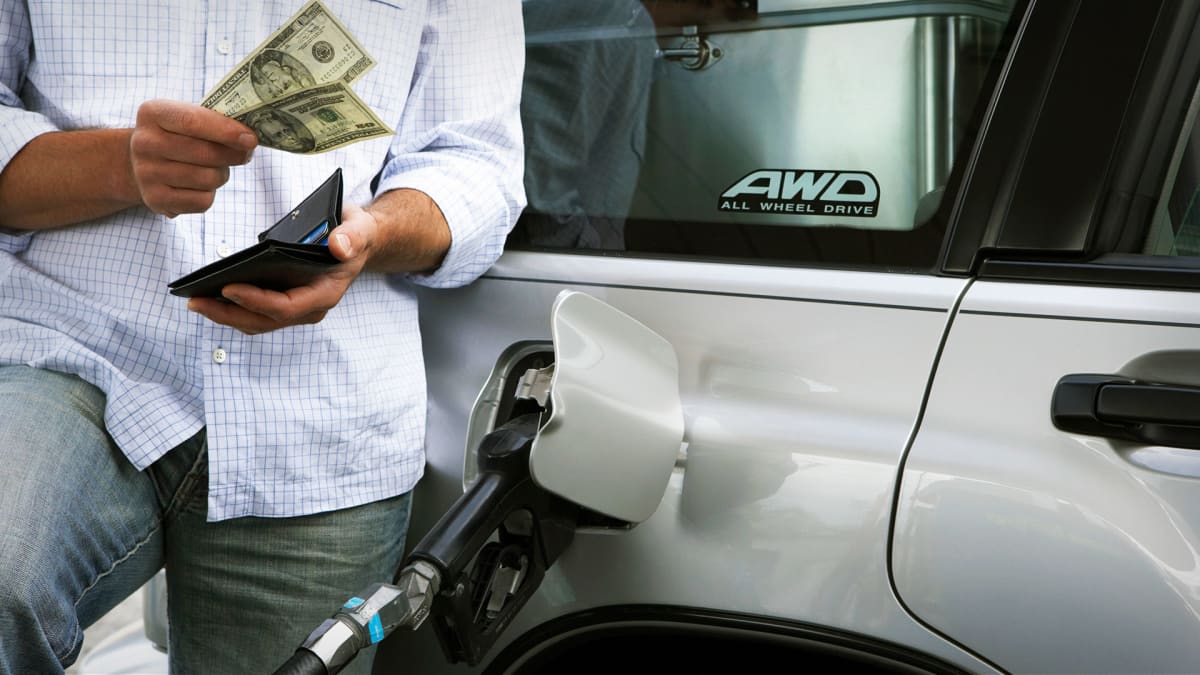
Americans are getting a reprieve this Memorial Day as they travel during the holiday weekend.
Experts predict a record number of people will head off to their destinations for the three-day weekend, which marks the beginning of summer travel.
Gasoline prices are estimated to remain well under $4 a gallon this weekend as crude oil prices have drifted lower.
DON'T MISS: What's Driving Gasoline Prices Lower
That's a reprieve this holiday weekend compared to last summer. Drivers are expected to save at least $1.6 billion compared during the four-day period, said Patrick De Haan, head of petroleum analysis at GasBuddy, a Boston-based provider of retail fuel pricing information and data.
"Memorial Day gas prices are down significantly across the country from last year," De Haan told TheStreet.
Gasoline prices fell for three consecutive weeks in late April and early May when crude oil prices also dropped. But gasoline prices have stablilized and the declines have stopped recently.
The national average price of gasoline is selling for $3.58 per gallon, down by $1.04 a gallon from last year, according to GasBuddy data. Prices for diesel dipped also to $3.91 a gallon, dropping by $1.58 a gallon from last year.
Drivers Pocketing $1.6 Billion This Year
"But while the drop will save Americans $1.6 billion over the four day period compared to last year, motorists are cautious about their travel plans this summer with economic headwinds and inflation giving them pause when planning," he said.
Prices have remained flat during the past week. But some states have raised gasoline prices, which is "driven by oil’s volatility as debt ceiling discussions are ongoing," De Haan said.
Gasoline prices could increase slightly by May 26, "especially if there are positive developments in the debt ceiling discussions in D.C., while pessimism could drive prices slightly lower,” he said.
The good news is that drivers can plan and budget for their summer vacations this year because gasoline prices should continue selling for less than $4 a gallon at the pump during the season.
"The national average should remain below the $4/gallon mark for much of the summer, barring unexpected economic improvements, hurricanes or refinery outages," De Haan said.
Drivers are saving a total of $667 million daily on gasoline and diesel, he said.
"The United States is spending roughly two-thirds of a billion dollars less on fuel every 24 hours compared to one year ago," De Haan said.
Volatility in crude oil prices is expected to remain as discussions on reaching an agreement to raise the debt limit continue.
West Texas Intermediate, the U.S. benchmark for crude oil, was trading up by 1.03% at $72.57 while international benchmark Brent crude rose also by 0.95% at $76.90.
Both WTI and Brent crude prices rose on May 23 as the Saudi energy minister said there is the potential of additional production cuts by OPEC+, resulting in lower gasoline inventory. WTI increased by 1.2% at $72.91 a barrel while Brent crude rose by 1.1% at $76.84 a barrel.
Saudi Arabia's Energy Minister Prince Abdulaziz bin Salman said on May 23 that short sellers on crude oil prices could lose money.
"Speculators, like in any market they are there to stay, I keep advising them that they will be ouching, they did ouch in April, I don't have to show my cards I'm not a poker player... but I would just tell them watch out," he said at the Qatar Economic Forum, organized by Bloomberg.
Short sellers believe that prices for an asset will decline. They profit by borrowing the asset and selling it, in hopes of buying it back at a cheaper price and pocketing the difference. Those who are short oil, risk generating a loss when OPEC+ makes a decision to slash production levels that ends up boosting prices.
Higher demand for oil will continue in 2023 and record prices could occur during the second half of the year, said Rob Thummel, senior portfolio manager at Tortoise in Overland Park, Kan.
Inventory levels globally remain below normal and will likely stay at those levels, he said.
Oil prices are likely to rebound and could reach $85 to $95 a barrel for the year, Thummel said.
Most Common Gas Prices
The most common price of a gallon of gas in the U.S. is $3.39, up 10 cents from last week, according to data from GasBuddy. That's based on more than 11 million individual price reports from over 150,000 gas stations in the U.S.
The next four most common prices are $3.29, $3.49, $3.19, and $3.59.
The median price of gas is $3.39 per gallon, which is flat from last week and is 12 cents lower than the national average.
The top 10% of stations average $4.75 per gallon, compared to the bottom 10% averaging $2.91 per gallon.
Gasoline remains cheapest in Mississippi, where it is selling for $2.95 a gallon. Texas ranks second at $3.03 a gallon and Louisiana is third at $3.05 a gallon at the pump.
California's gasoline is the highest at $4.76 on average per gallon, followed by Hawaii at $4.74 a gallon and Arizona at $4.63 a gallon.
Our Memorial Day sale is on now! Get exclusive investing insights from TheStreet’s premium products. Learn more.







